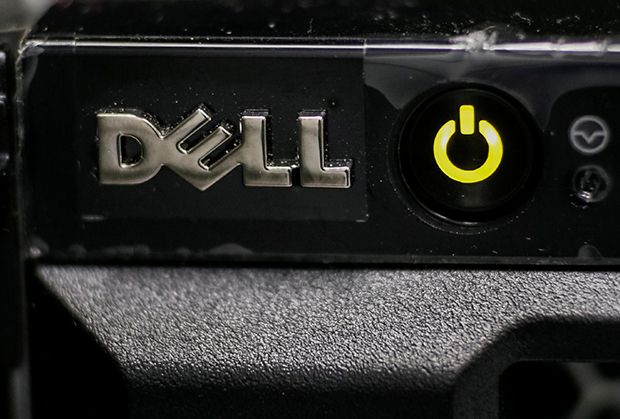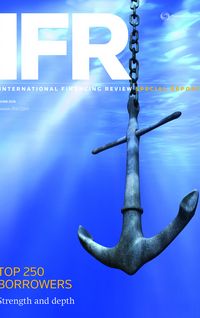Dell displayed deft timing on its financing initiatives, underpinned in no small measure by investors with an eye for a bargain.
Dell wowed the market with a blockbuster debt financing for its US$67bn acquisition of data storage company EMC this year – but its success was never a sure thing and some doubted the banks could pull it off just weeks before it cleared.
“It’s a big event for the Street,” one banker told IFR when the US$49.5bn debt commitment was signed in October 2015. “The fact that banks have shown up for Dell shows that they have balance sheet.”
Indeed, the prior weeks had been rocky in the capital markets and by the time Dell launched the first bit of the financing – a US$10bn pro rata loan – four months later, markets were feeling a whole lot worse.
Market volatility fanned fears about whether a company rated junk could win over investors with such a large and complex debt package that included loans, secured investment-grade bonds and a high-yield offering.
The long-term prospects for both the personal computer and data storage businesses were a concern of the buyside.
The early stages of the financing were tough. A commitment deadline on the US$10bn loan was pushed back in February due to a slow order book in turbulent markets.
More strife in the high-yield market in March as computer storage company Western Digital hit roadblocks on its junk bond offering in March also unnerved the underwriters: Credit Suisse, JP Morgan, Barclays, Bank of America Merrill Lynch, Citigroup, Deutsche Bank, Goldman Sachs and RBC Capital Markets.
Western had to price its Double B bonds 500bp more than similarly rated debt, encountering difficulties even though the high-yield market had been on the rebound – and Dell’s financing was on a much vaster scale.
But come May, things were looking a bit brighter and the linchpin to the whole financing – a blockbuster US$20bn investment-grade bond – meant bankers could breathe a sigh of relief.
The trade was structured to please – and please it did, amassing more than US$88bn of investor orders. It was also upsized from US$16bn – taking significant risk off the table for Dell and its banks.
The offering was secured by various forms of collateral: equity interest in Dell and its subsidiaries, property and inter-company notes, among other things.
That allowed the company to lock in investment-grade ratings, keep down funding costs and strengthen the appeal of what ended up as the fourth largest US dollar corporate bond ever printed. Final pricing levels were about 50bp–75bp tighter than IPTs.
Bankers said the deal lengthened Dell’s maturity profile at an overall financing cost they put at just 5.50%, and with access to the high-grade market, Dell should find it easier to manage its more than US$50bn debt stack in the years ahead.
“There’s no other place a company can get 30-year debt than in the investment-grade market,” one banker close to the deal said. “Not in the loan market or high-yield.”
Faith in veterans
The success of that deal paved the way for the investment-grade term loan and junk bond sale. The upsized high-grade bond lowered the size of the term loan, and after asset sales, Dell also had to raise less debt overall – just over US$41bn.
Banks launched the US$5bn term loan – the biggest in seven months – just days after the high-grade issue. As deal-starved investors clamoured for a piece of the debt, the banks were able to cut pricing to 325bp over Libor from 350bp–375bp and tightened the discount to 99.50 from 99.
The junk bond followed soon after – and if Dell had been hoping goodwill would help win over investors, its bet paid off.
Since its management buyout in 2013, the company had delivered on its promise to cut down debt – giving investors more faith that the company well achieve its new goal of getting back to investment-grade in the next 12–18 months.
“Dell has built goodwill with significant debt reductions,” said one portfolio manager.
“It is a veteran issuer in the leveraged finance markets that has demonstrated an ability to evolve as the business environment for its products changes.”
Dell sold the riskiest and lowest rated portion of the financing in June. It raised US$3.25bn through a Double B rated bond, evenly split between a five-year non-call two that priced at a yield of 5.875% and an eight-year non-call three that cleared at 7.125% – tightening pricing on both tranches by 37.5bp from price talk of 6.25% and 7.50%.
But even at those levels, the deal ended up offering a sizeable pick-up to Dell’s investment-grade bonds.
The five-year ended up offering more than 200bp over the company’s high-grade 2021s. An even bigger pick-up of over 230bp was offered at the longer end of the curve, where the high-grade 2023s were trading at a yield of around 4.80%.
“I think it’s one of the better stories in high-yield,” one junk bond investor told IFR. “Management has a lot of credibility and has done a great job in paying down debt.”
Thanks to a rally in junk bonds of late, the absolute yield offered by Dell was well below what bankers and investors had anticipated a couple of months ago.
“Back in April, people were expecting the bond deal to come in the 10%–12% range,” said the investor. “It indicates how much the market has healed since then.”
Spreads on Double B rated bonds had compressed by 213bp since their February 11 wides when the junk bond was launched, according to the Bank of America Merrill Lynch Master index.
Meanwhile, the strong performance in the secondary by Dell’s high-grade bonds helped build momentum for the new deal.
“That was a big clearing event for the market,” said another investor. “It priced with a new issue concession and performed well. It set the table for the high-yield bond.”
To see the digital version of this special report, please click here
To purchase printed copies or a PDF of this report, please email gloria.balbastro@thomsonreuters.com




